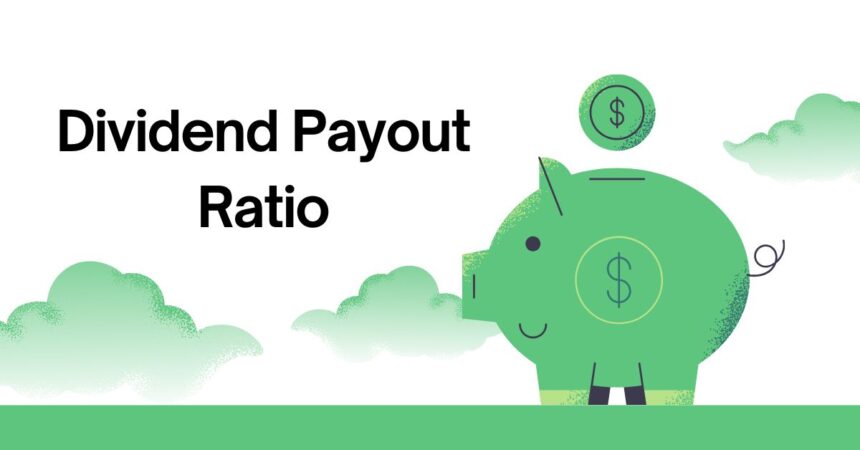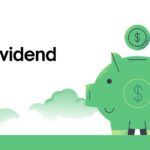The dividend payout ratio is a financial metric that measures the proportion of earnings a company distributes to its shareholders as dividends. It’s expressed as a percentage of net income and can provide investors with insights into how much profit is being returned to shareholders versus being reinvested back into the company.
For example, if a company has a net income of $1 million and pays out $250,000 in dividends, the dividend payout ratio is 25%.
Key Takeaways
- The dividend payout ratio is calculated by dividing total dividends by net income.
- It helps investors assess how much profit is being paid out versus retained.
- Example: A company with $500,000 in net income and $150,000 in dividends has a 30% payout ratio.
- High payout ratios can signal a mature company, but also may limit growth opportunities.
How to Calculate Dividend Payout Ratio
The formula for the dividend payout ratio is:Dividend Payout Ratio=(DividendsNet Income)×100\text{Dividend Payout Ratio} = \left( \frac{\text{Dividends}}{\text{Net Income}} \right) \times 100Dividend Payout Ratio=(Net IncomeDividends)×100
Example Calculation:
- Company XYZ has a net income of $2 million.
- It pays $800,000 in dividends.
- Dividend Payout Ratio:
800,0002,000,000×100=40%\frac{800,000}{2,000,000} \times 100 = 40\%2,000,000800,000×100=40%
This means the company distributes 40% of its profits to shareholders as dividends.
Why is the Dividend Payout Ratio Important?
- Assess Dividend Sustainability:
- A low payout ratio (under 50%) may indicate that a company has enough earnings to sustain or increase dividends in the future.
- A high payout ratio (over 80%) could indicate that the company is paying out most of its earnings, which may limit its ability to reinvest in business growth.
- Determine Financial Health:
- A stable or growing dividend payout ratio suggests that a company is in good financial health, especially when the company has a consistent track record of profitable years.
- Companies with low payout ratios often reinvest profits to fuel business growth, research, or acquisitions.
- Investor Decision-Making:
- Investors seeking consistent income will look for companies with a moderate to high payout ratio, whereas growth investors might prefer companies that reinvest profits to fuel expansion.
Types of Dividend Payout Ratios
- Stable Dividend Policy:
- Companies with a stable dividend policy aim to keep their payout ratio consistent, regardless of earnings fluctuations.
- Example: A utility company with steady cash flow may maintain a payout ratio of 60% even if its earnings vary slightly.
- Earnings-Based Dividend Policy:
- In this case, the payout ratio fluctuates depending on the company’s earnings performance.
- Example: A tech startup might pay a low or no dividend when earnings are reinvested in growth, resulting in a payout ratio of 0% during growth phases.
- Target Payout Policy:
- Companies using this approach may set a target payout ratio and adjust their dividends based on long-term profit goals.
- Example: A company targets a dividend payout ratio of 40%, adjusting dividends as profits rise or fall.
Dividend Payout Ratio and Types of Companies
- Mature Companies:
- Typically, these companies have a stable payout ratio, often paying out 50-80% of earnings in dividends.
- Example: Companies like Coca-Cola and Procter & Gamble often have high payout ratios as they focus on rewarding long-term investors.
- Growth Companies:
- Growth companies often have lower payout ratios, as they reinvest earnings to fund future growth opportunities.
- Example: Amazon and Tesla retain a large portion of their earnings to fund business expansion and development.
- High Dividend Yield Companies:
- These companies have higher payout ratios, providing income for investors seeking dividends.
- Example: Real Estate Investment Trusts (REITs) often have high payout ratios because of tax regulations requiring them to distribute 90% of taxable income as dividends.
Pros and Cons of a High Dividend Payout Ratio
Pros:
- Consistent Income: Investors receive steady income, which is attractive to retirees or those seeking passive income.
- Appeals to Conservative Investors: High payout ratios are often appealing to investors who prioritize stability and income over growth.
Cons:
- Less Reinvestment: High payout ratios mean less money for reinvestment into the business, which could limit growth potential.
- Financial Strain: If a company experiences financial difficulty, maintaining a high payout ratio could strain resources and increase the risk of a dividend cut.
Dividend Payout Ratio vs. Retention Ratio
- Dividend Payout Ratio measures how much of the company’s earnings are paid out as dividends.
- Retention Ratio (also known as plowback ratio) measures the percentage of earnings retained for reinvestment.
- The two ratios are inversely related. For example, if a company has a 60% dividend payout ratio, the retention ratio is 40%.
Real-Life Example: Coca-Cola
Coca-Cola has a dividend payout ratio of about 75-80% of its earnings, indicating a company that rewards its shareholders with steady dividends while still retaining enough earnings for expansion.
The dividend payout ratio is a valuable metric for investors to evaluate how a company is distributing its profits. A balance between rewarding shareholders and ensuring funds for growth is key for long-term sustainability. By understanding this ratio, investors can make more informed decisions about whether a company’s dividend payments align with their investment goals.





